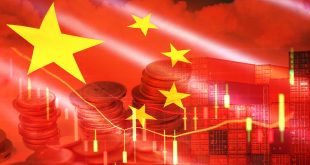Investors are busy analyzing the potential levels of the Fed’s hawkishness. They are also digesting Wednesday’s speech by Fed Chair Jerome Powell. Fed officials projected that rates will rise at least another half a percentage point next year. That was enough to impact US stocks that became lower and at the same time boosted Treasury yields higher briefly.
Since the central bank’s last policy decision on November 2, the S&P 500 had climbed almost 7% through Tuesday, marking the best intra-meeting performance since June 2020. A US Financial Conditions Index kept by Goldman Sachs Group Inc. slipped 0.8% for the largest easing between Fed meetings since August 2009.
Jerome Powell’s comments at the news conference following the rate decision initially darkened the market’s mood. He does not sound optimistic about the state of the economy, he even sounds more pessimistic than his speech at Jackson Hole.
But some investors took heart when Powell said policy is getting into a good place now and will be “sufficiently restrictive” soon.
The key driver of stock and bond prices before the presser is the dot plot which came in about 25bp above what was priced into Fed Funds futures. We believe that the increase in the dot plot was well signaled so the impact on the bond and stock market is very small.”
The US central bank is still reserved about the possibility of recession, but with most Fed officials considering downside risks, it is fair to say they are far more worried about the economic outlook than they are willing to admit.
The American dollar’s performance is negative after the FOMC decision. Financial markets were pretty much on hold ahead of the event, with major pairs confined to tight intraday ranges.
The central bank delivered a 50-basis point rate hike as widely anticipated, while the accompanying statement was pretty much a copy of the previous one.
Chairman Jerome Powell came out with hawkish comments. Among other things, Powell noted that the ultimate level of rates is more important than how fast they go, adding that the FOMC needs to hold rates at their peak until policymakers are “really confident” inflation comes down in a sustained way.
Finally, he said that the focus remains on moving the policy stance to become restrictive enough, not on rate cuts. His words take their toll on equities, with US indexes plummeting but the dollar barely able to post a short-lived advance. The movements were short-lived, as the greenback quickly resumed its decline as stocks bounced off their lows.
 Noor Trends News, Technical Analysis, Educational Tools and Recommendations
Noor Trends News, Technical Analysis, Educational Tools and Recommendations





